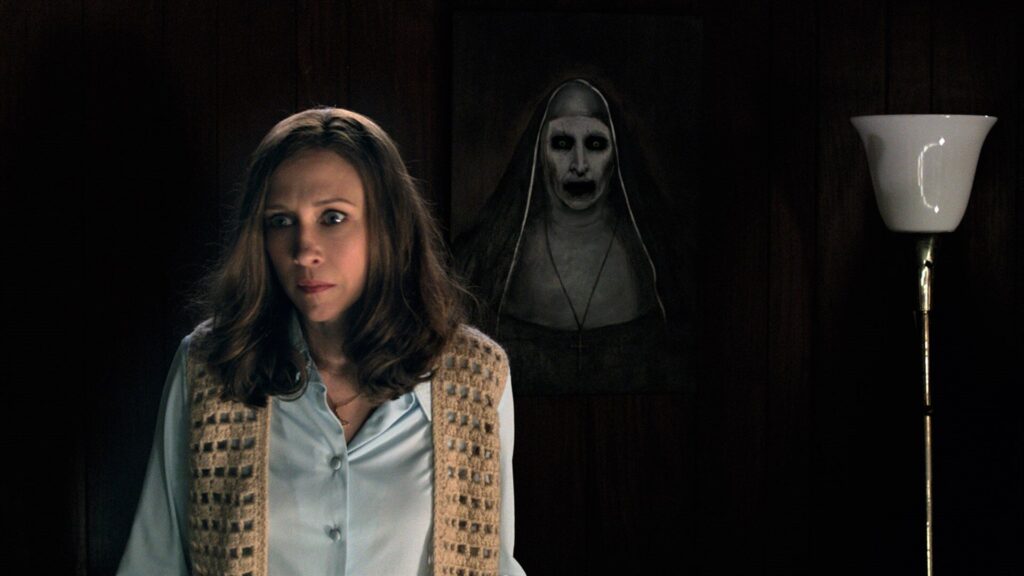Last September, I gave you a step-by-step guide on introducing a scaredy-cat to jump scares. But over the past year, I have continued to hear the same conversations from horror fans the world over. “That movie sucked, it was all jump scares.” “They couldn’t make it scary, so they just threw in a bunch of jump scares.” How cheap, how tawdry, and on and on and on. It turns out that teaching people how to endure jump scares is just half the battle. Teaching people how to respect jump scares is an entirely different prospect.
Beware Anti-Jump Scare Propaganda
There are people who genuinely dislike jump scares for good reasons, both personal and philosophical. However, given how frequently the same talking points are regurgitated over and over when it comes to jump scares, a lot of people are imitating the opinions of others rather than investigating their own relationships to jump-scare-heavy movies. If you talk to enough horror fans, you get the sense that the general party line is that jump scares are a cheap, lazy way to frighten the audience and spice up an otherwise uninteresting B-movie. Ask anyone in the know about the differences between 1989’s The Woman in Black and the 2012 version if you want a real potent example.
And sure, throughout horror history there are plenty of bad jump scares where you can practically see the production assistant’s hands tossing the black cat into frame in front of the woman in the diaphanous nightgown. However, at the same time, moments like the final scene of 1976’s Carrie or the big hospital scare sequence in The Exorcist III are generally hailed as masterpiece moments. This strikes me as hypocritical, for one very good reason. It is hypocritical.
Listen To Your Body
There’s a reason even anti-jump scare folks will praise some of the best examples of the form. Jump scares are servicing a different, but no less valuable, need for the horror fan than “elevated” horror material that is more atmospheric and dread-inducing. This is because they have a profound, direct impact on the body. Jump scares spike the adrenaline, cause the heart to race, and generally exhilarate the system. While this is something that general dread can accomplish too, jump scares provide a much more immediate rush, like taking a ride on a roller coaster. And who the hell ever got off a roller coaster and said, “I wish that was more intellectually stimulating?”
A dread-filled atmosphere is to a good, solid jump scare is what a filet mignon is to a handful of M&M’s. Presuming they align with one’s tastes in the first place, both experiences are satisfying in their own unique way, but there’s only one you’d post on Instagram about. The only major difference between them is how they are perceived by others rather than the way they are received by oneself. On top of that, not all jump scares are mindless carnival rides, anyway (even though there’s absolutely nothing wrong with being that in the first place).
Switch Your Brain On (If You Want)
Maybe the propaganda is right. Maybe jump scares are cheap. But the best ones are never, ever lazy. As if we needed proof that there’s more nuance to jump scares than people give them credit for, there are a wide selection of different varieties of jump scares in the horror genre. The two primary categories are slow burn horror scenes that culminate in a big scare (ie. the clapping scene in The Conjuring) and short sharp shocks that come out of nowhere during a seemingly calm scene (i.e. the end of the original Friday the 13th).
The former type are the ones that typically receive the complaint “I could see the scares coming from a mile away.” But here’s a little secret: That’s usually the point. Filmmakers working in the Conjuring slow-burn mode want you to know there’s a scare coming down the line. The trick is in not telling you when it’s going to come. These scenes harness the anticipation of a jack-in-the-box, prepping you for a random shock but still making you jump nevertheless. This type of active participation in a scene can be just as intellectually satisfying as dissecting the subtextual themes of a character’s dialogue, especially when the filmmakers have the prestidigitation skills to point your attention in one direction, only to have the scare come from a completely unexpected place.
Shed Your Shame
Ultimately, what I think people are doing when they complain about cheap jump scares is the same thing that one does when groaning after somebody tells a pun. That’s the reaction you’re expected to make to something perceived as “low culture.” But didn’t you secretly sort of enjoy that pun? Admitting you’ve enjoyed a bad joke has become taboo for whatever reason, but the “worst” puns are the ones that get repeated the most, because piss and moan all you want, you’re only human. Sometimes you need to act upon your more basic urges, even if they’re not as classy as the interests you probably want to be known for. Societal pressure is a tough nut to crack sometimes, but embracing both the high and low elements of the genre is simply allowing oneself to enjoy a fuller spectrum of horror movie moments.
My point is, don’t limit yourself. Eat those M&M’s. Laugh at your friend’s stupid puns. And jump into the scares.
